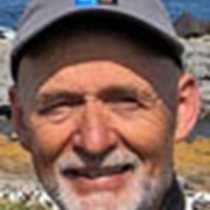Bellsund, Svalbard
Early risers were welcomed by a soft carpet of fog as our good ship National Geographic Explorer glided over calm seas towards Bellsund on the west side of southern Spitsbergen. This was the first day of exploration for our new guests. Just before Expedition Leader Bud Lehnhausen made his wake-up call, the fog lifted, and a magnificent sunlit landscape at Midtherhuken lay before us. But – alas – our fortune didn’t last long as suddenly we were caught by another bank of dense fog. One should, however, keep in mind that fog coming and going like this is part of the typical weather regime in Svalbard during the early Arctic summer.
As we were waiting for the fog to disappear our photo specialists Ralph Lee Hopkins and Mike Nolan gave a useful lesson on how to improve photography on this trip. Shortly after this, a slide show by Norwegian staff Carl Erik Kilander gave us an introduction to Svalbard’s geography, politics, history and nature.
Bellsund constitutes the common mouth of Van Mijenfjord and Van Keulenfjord. This is an area of great ecological richness due to varied geology as well as a relatively favourable local climate. The area is renowned for its rich birdlife, including resting grounds for huge flocks of migrating Arctic geese. As we were waiting for the fog to lift, large numbers of guillemots rushed over our heads, fetching and carrying food for chicks in the nesting cliffs of Midterhuken.
The fog got denser, and we nosed into Van Keulenfjord, hoping to get away from the fog. As lunch was about to finish, a pristine fjord landscape came into view. We found our ship surrounded by small icebergs and numerous ice floes. Finally our outdoor activities could begin! Some guests signed up for kayaking, whereas a Zodiac cruise in the inner part of Van Keulenfjord was a popular choice among the others. Many of the common seabird species of Svalbard were observed: black-legged kittiwake, glaucous gull, black guillemot, common guillemot, Brünnich’s guillemot, little auk, fulmar, Arctic skua, common eider and Arctic tern. Many guests seemed tempted to extend the scheduled time outside but all gathered in the lounge in time for cocktails before the Captain’s welcome dinner.
During the night we will round Sørkapp (South Cape) – the southernmost point of Spitsbergen, heading for colder waters in Storfjorden, on the east side of the island. If we find drift ice, then we might see seals. And where the seals are, we might get sight of interesting white creatures. Nothing guaranteed, of course, but many guests have certainly left little doubt about their expectations for the coming days.



